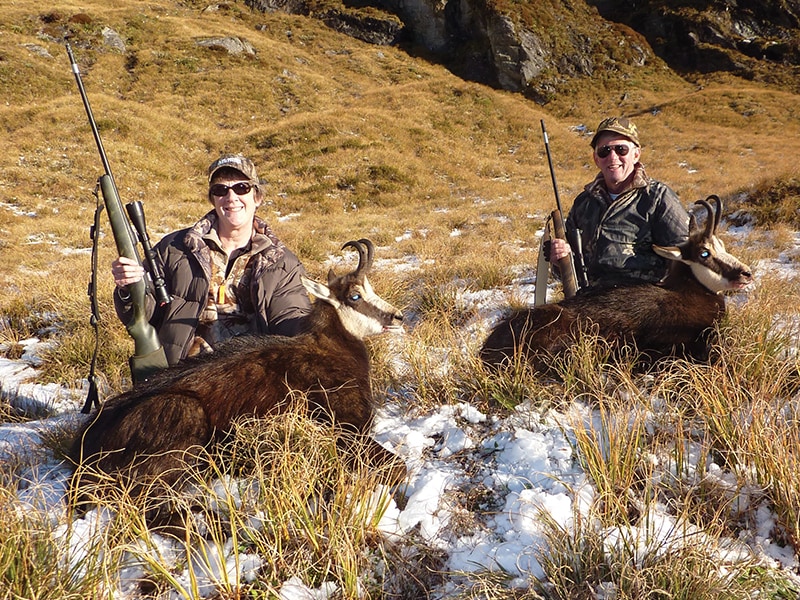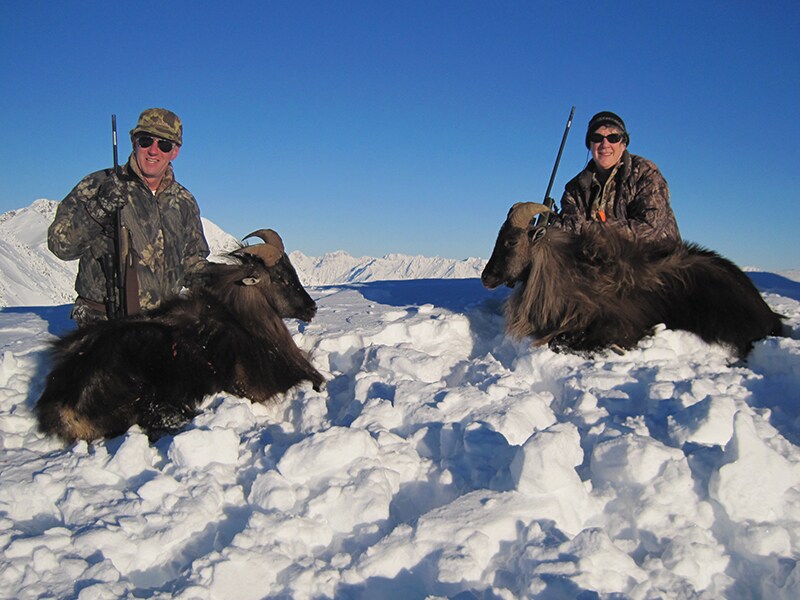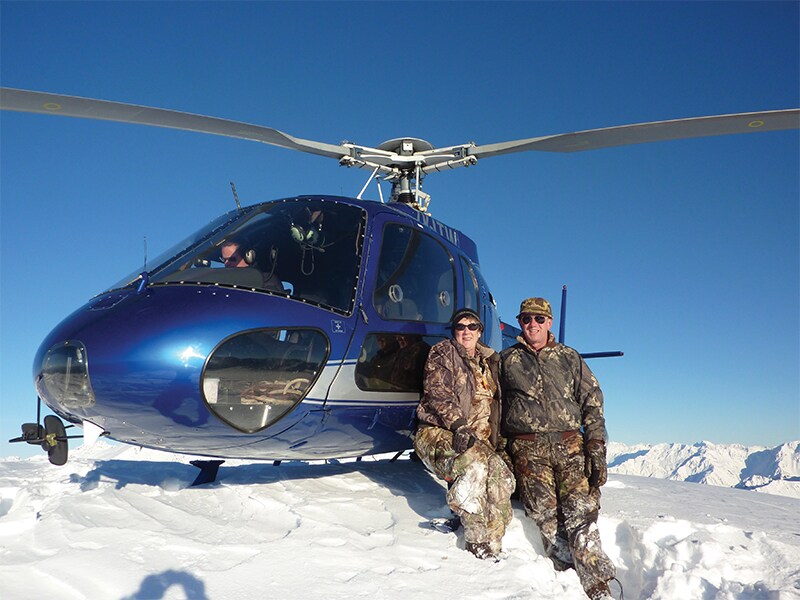Chamois & Tahr in New Zealand

Did anyone explain how we hunt chamois and tahr down here? Frankly, the question seemed unusual. We had hunted for a few days on the North Island and were now on the South Island looking specifically for these animals; presumably it would be the same – spot and stalk. Not exactly!
Chamois and tahr are not native to New Zealand; they were introduced from Europe, early in the 20th century. Because the government places great value on the native alpine vegetation, that the chamois and tahr feed on, the Department of Conservation considers them to be “pests” and the rules of engagement are “interesting.” The Department’s strategy is serious population and territory control.
Brenda and I were staying at a nice quiet bed and breakfast, just outside of Wanaka. About 9:00 a.m., a helicopter landed in the side yard; we jumped in, carrying nothing but our rifles, and headed into the mountains – pretty good service. Thirty minutes later, our guide - Matt Wallis, announced, through the headsets, that we were getting close to chamois country and could begin seeing game at any time.
Being herd animals, it wasn’t difficult to spot them in the partially snow-covered alpine meadows, as

the helicopter approached. The guide would look over the herd, then we would continue flying to the next valley; finally, he announced that there was a good one we should shoot. As the helicopter approached, the chamois made their way up hill and held up in a patch of big rocks. We dropped off Brenda and the guide and pulled away. It was a quick shot at about 250 yards, after which we picked up the hunter and guide and flew uphill to the dead chamois. We couldn’t land, only hover, while the guide jumped out and secured the chamois to the helicopter – with a rope. Then, we flew to the top of a windswept ridge, dropped off the chamois and went hunting for another.
Thirty minutes later, I had shot the second chamois and we returned to the drop off point of the first, landed and took pictures, then back to town – all in about two and a half hours. The next day we hunted tahr in a different area – but using the same technique. It was certainly an unusual method of hunting, and just one of the many different customs we’ve experienced, while big game hunting around the world.

